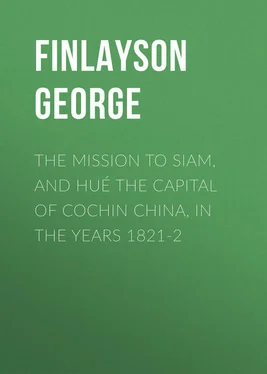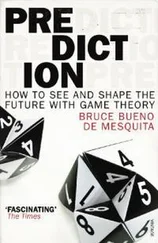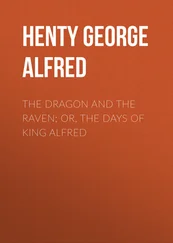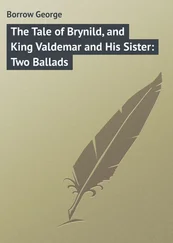George Finlayson - The Mission to Siam, and Hué the Capital of Cochin China, in the Years 1821-2
Здесь есть возможность читать онлайн «George Finlayson - The Mission to Siam, and Hué the Capital of Cochin China, in the Years 1821-2» — ознакомительный отрывок электронной книги совершенно бесплатно, а после прочтения отрывка купить полную версию. В некоторых случаях можно слушать аудио, скачать через торрент в формате fb2 и присутствует краткое содержание. Жанр: foreign_antique, foreign_prose, на английском языке. Описание произведения, (предисловие) а так же отзывы посетителей доступны на портале библиотеки ЛибКат.
- Название:The Mission to Siam, and Hué the Capital of Cochin China, in the Years 1821-2
- Автор:
- Жанр:
- Год:неизвестен
- ISBN:нет данных
- Рейтинг книги:5 / 5. Голосов: 1
-
Избранное:Добавить в избранное
- Отзывы:
-
Ваша оценка:
- 100
- 1
- 2
- 3
- 4
- 5
The Mission to Siam, and Hué the Capital of Cochin China, in the Years 1821-2: краткое содержание, описание и аннотация
Предлагаем к чтению аннотацию, описание, краткое содержание или предисловие (зависит от того, что написал сам автор книги «The Mission to Siam, and Hué the Capital of Cochin China, in the Years 1821-2»). Если вы не нашли необходимую информацию о книге — напишите в комментариях, мы постараемся отыскать её.
The Mission to Siam, and Hué the Capital of Cochin China, in the Years 1821-2 — читать онлайн ознакомительный отрывок
Ниже представлен текст книги, разбитый по страницам. Система сохранения места последней прочитанной страницы, позволяет с удобством читать онлайн бесплатно книгу «The Mission to Siam, and Hué the Capital of Cochin China, in the Years 1821-2», без необходимости каждый раз заново искать на чём Вы остановились. Поставьте закладку, и сможете в любой момент перейти на страницу, на которой закончили чтение.
Интервал:
Закладка:
Of the Order Fuci, there is here a remarkable species, usually found growing in isolated patches upon coral banks. It is pinnated, plumose, elegant, about a foot and a half in length, and of a whitish colour. It is endued with the property of stinging like nettles; the sensation produced is more acute, and more penetrating – more instantaneous, but somewhat less permanent. The hand is scarcely brought into contact with it before the wound is inflicted. A small corrugated, granular bag, filled with a transparent fluid, would seem to be the organ by which it produces this effect. These are no sooner touched than they discharge the fluid they contain. The plant soon loses this power, after having been removed from the water. The comparative scantiness of the Cryptogamiæ is amply compensated for by the number, variety, beauty, and utility, of the more interesting order of Phænogamous plants. Of the former, the abundance of a few individuals is considerable, whilst, respecting the latter order, we are less impressed with the extent to which individuals exist, than with the great variety which they offer, a remark still more applicable to the zoology of this region than the botany.
Among the vegetable productions applicable to economical, commercial, and other purposes, is the Gambir; Nauclea Gambir and Aculeata, Linnæi, or nat. ord. Rubiaceæ of Jussieu.
Gambir, Terra Japonica, or Catechu, is obtained in large quantities from the leaves of this plant. The process is both simple and cheap. The leaves are collected three or four times a year: they are thrown into a large cauldron, the bottom of which is formed of iron, the upper part of bark, and boiled for five or six hours, until a strong decoction is obtained. The leaves are then withdrawn, and allowed to strain over the vessel, which is kept boiling for as many hours more, until the decoction is inspissated. It is then allowed to cool, when the Catechu subsides. The water is drawn off; a soft soapy substance remains, which is cut into large masses. These are further divided by a knife into small cubes about an inch square, or into still smaller pieces, which are laid on frames to dry. This Catechu has more of a granular, uniform appearance than that of Bengal. It is perhaps also less pure. The price in the market is four dollars per pecul, or 133½ lbs. It is exported to Java and the other eastern islands, where it is chiefly used for chewing with the betel leaf. The leaves of the plant when chewed give a very astringent taste, which is soon followed by a sweet, agreeable, and aromatic flavour.
We have already observed, that the most luxuriant vegetation of spontaneous growth affords no certain proof that the soil which has produced it will prove equally favourable for the production of the usual objects of culture. The soil of Singapore, however, would seem to be highly favourable for the cultivation of those products which are confined to intertropical regions. The Malay race, accustomed to a roving, unsettled life, have paid but little attention to agricultural pursuits. In this respect they are much in the situation of the Nomade tribes of northern Asia, or the more savage banditti of the Arabian deserts. Their labours, therefore, afford no adequate means of forming an estimate of the capacity of the soil. The skill and other resources of Europeans have not yet been directed to this end; neither has the well-proved industry of the Chinese had time to produce any considerable effect. The experiments, however, which have been made by the latter in the cultivation of pepper, and in the manufacture of Terra japonica, have given good earnest of what may be expected from agricultural operations of greater magnitude. Judging from the natural appearance of the country, it may be presumed that the whole island is susceptible of a high degree of culture. The soil is gently undulating, here and there rising into low, mammated or rounded hills of inconsiderable altitude; the temperature is favourable; irrigation is abundant, and the soil of the interior parts is composed of sand and stiff clay, mixed up with a large proportion of vegetable matter, which gives it a very black appearance. There is a general tendency to the formation of swamps; but never to the extent of forming lakes. Rivulets and creeks abound in various parts of the island. The former are of the greatest value in a commercial point of view, by the facilities, as well as safety, which they afford for the transport and landing of goods. The rivulets are but of inconsiderable size. Their waters are almost always of a black colour, disagreeable taste, and peculiar odour, properties which they would appear to derive from the peculiar nature of the superficial soil over which they pass, in many parts resembling peat-moss, as has been already observed. The water, however, drawn from wells penetrating through the sandy base, is much less sensibly marked by these disagreeable qualities.
It is at the point where the fresh water of rivers and rivulets intermixes with that of the sea, that we find Mangroves chiefly to abound. The economy of these plants is so strikingly peculiar in character, that they claim great attention from every observer. The species most common on the banks of rivers, in these climates, is the Rhizophora Gymnorhiza, a tall, handsome tree, often growing to the height of forty feet, covered with a thick profusion of large, oblong, fleshy leaves, disposed in tufts at the extremities of the branches. The singular form of the fruit in this tree is too well known to require description. The descriptions of botanists are, however, but indifferent.
The stem would seem to perform the usual functions of leaves, being covered with a remarkably thin epidermis. It is frequently submerged to the height of twelve feet or more, on which occasions it doubtless performs different functions. Numerous roots are thrown down from the branches, and in this manner a single tree is often conducted, as it were on props, over a great extent of ground, rendered intricate and impervious to animals.
Another species, the Rhizophora Mangle, is more independent of the presence of fresh water; often extending laterally along the sea-beach, or growing entirely in sea-water. Other species are possessed of similar habits.
The shade of these plants is the favoured abode of innumerable tribes of insects, particularly of mosquitoes. Inhospitable, therefore, is the shade or shelter they afford to man 3 3 Much stress has been laid on the apparent insalubrity of marshes of this sort; and it has been maintained that in many parts they are the chief, if not the sole, cause of the most fatal of intertropical diseases, remittent fever. Humboldt, in his Essay on New Spain, lays great stress on the effect produced by the growth of Rhizophora Mangle, Pothos, Arum, and of the other plants which flourish in a marshy soil charged with saline particles, in the production of yellow fever. Without calling into question the insalubrity of marshy situations in general, there appears great reason to believe that we are still ignorant of the actual causes of this frightful disease. The settlement of Singapore is possessed in an eminent degree of the circumstances which are thought to be most conducive in producing the disease. Yet here it is as yet unknown. An intertropical climate on the margin of the sea, a continually high temperature, rapid and intense evaporation, a humid and extensive series of saline and fresh water marshes exposed to a burning sun, the vegetative impulse in a degree of activity unequalled perhaps in any other part of the globe, the occasional suspension of herbaceous vegetation by long-continued heat, accompanied by drought, profusion of vegetable matter, as leaves, felled wood, fruits, &c., intermixed with animal matter, forming fomites in every stage of the putrefactive process, are amongst the more conspicuous of the causes to which the occurrence of this disease is usually attributed; and here all the causes enumerated operate with tenfold force.
.
Интервал:
Закладка:
Похожие книги на «The Mission to Siam, and Hué the Capital of Cochin China, in the Years 1821-2»
Представляем Вашему вниманию похожие книги на «The Mission to Siam, and Hué the Capital of Cochin China, in the Years 1821-2» списком для выбора. Мы отобрали схожую по названию и смыслу литературу в надежде предоставить читателям больше вариантов отыскать новые, интересные, ещё непрочитанные произведения.
Обсуждение, отзывы о книге «The Mission to Siam, and Hué the Capital of Cochin China, in the Years 1821-2» и просто собственные мнения читателей. Оставьте ваши комментарии, напишите, что Вы думаете о произведении, его смысле или главных героях. Укажите что конкретно понравилось, а что нет, и почему Вы так считаете.












